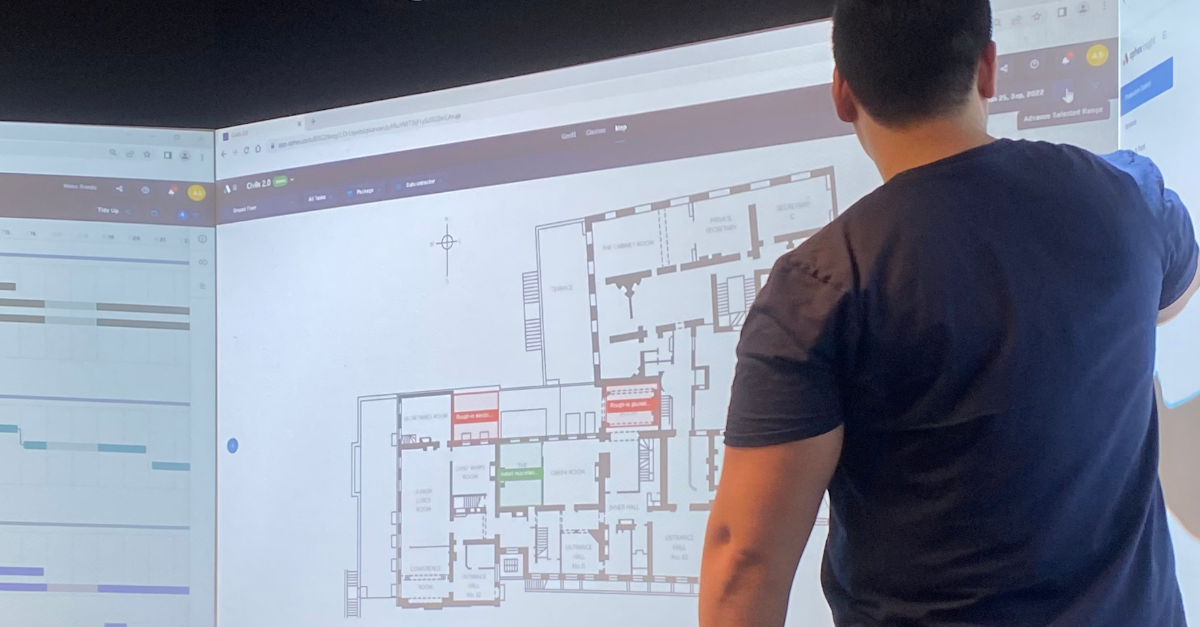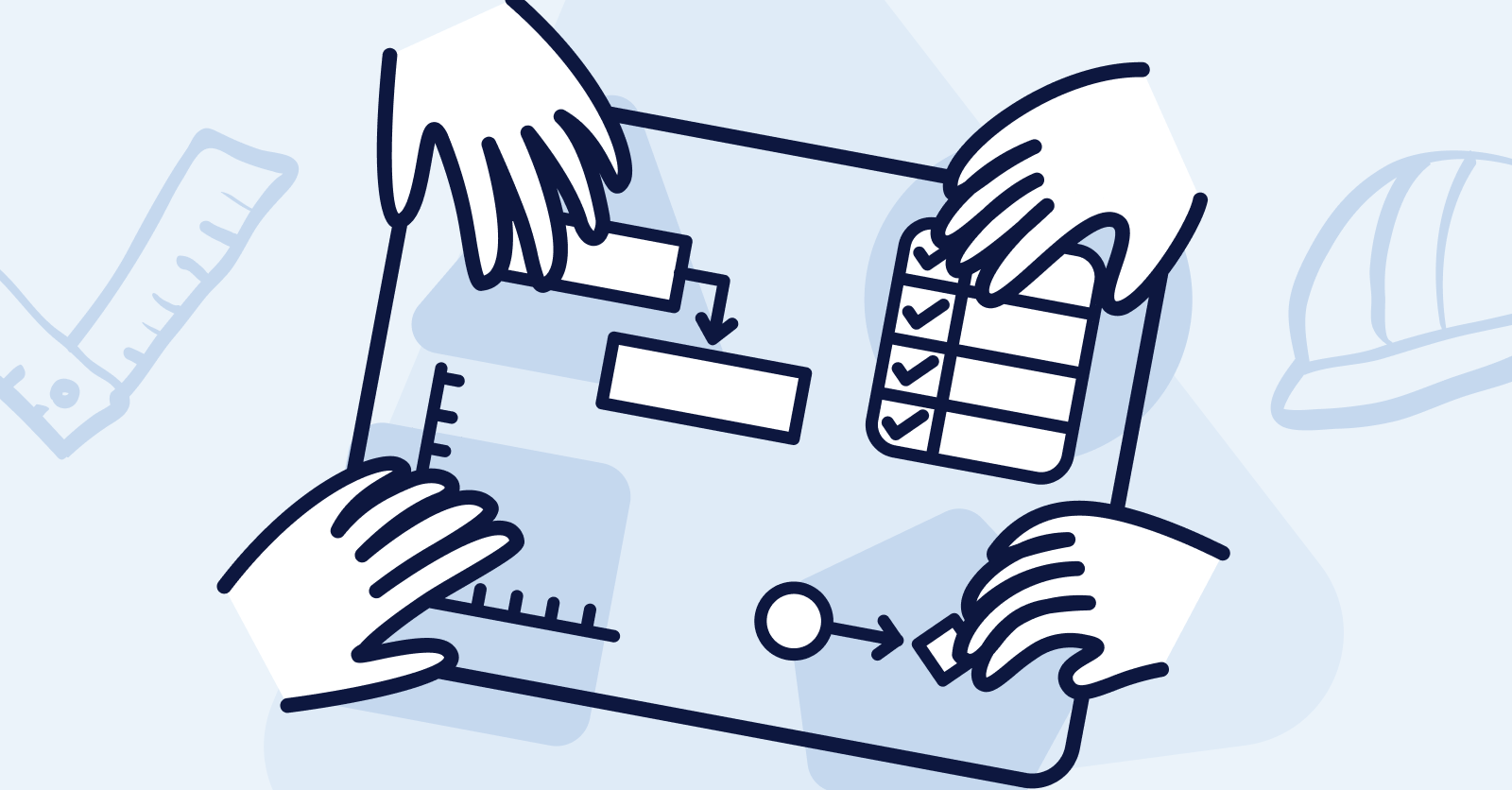If you’re involved in construction, you’ll likely be familiar with the concept of a war room. It’s an age-old idea that’s stood the test of time.
But maybe you’re wondering if your war room is missing something, you’re looking to make improvements, or you’re setting one up on a new site and got no idea where to start.
If any of those things apply to you, then keep reading.
If not, then keep reading anyway. We’re sure you’ll enjoy it.
What is a War Room used for in construction?
A war room is a neutral space designated for the planning and management of a project. Most large construction projects have one, and you'll usually find them decorated with printed site maps, schedules, and running lists of promised tasks or shifts.
As you’d imagine, the term comes from the military, but it’s a concept that’s widely adopted for all kinds of project planning. Think of it like a shared command centre where different teams and stakeholders can meet.
Construction often feels chaotic, and it helps to have a designated place to collaborate and work on plans. Having a physical space to visualise the project helps the whole team keep on top of change and potential issues.
Equipment check
War room set-ups differ from project to project as physical constraints, team size, and budget varies. That being said, some things are non-negotiable.
The room itself
This seems obvious, but picking the right space to set your room up is essential. In an ideal world, you’d have a large spacious room with natural light, luxurious sofas, coffee machines, heating, and air-con. We can all dream.
In reality, try to consider the following things when deciding where to set up:
- Is it sheltered? You don’t want team members, equipment and plans being left out to the elements.
- Is there enough space for everyone attending the meeting?
- Is there enough space for the required equipment?
- Can you tie the space up for long periods of time? Ideally, weeks or months, depending on the project.
- Does it have (or can you set up) power and WiFi?
Required Provisions
The physical equipment needed to make, manage and display site plans.
- Whiteboards
- Power cables
- WiFi
- Chairs
- Stationary
If you’re working on larger project then television screens, monitors, and projectors are commonly considered as necessities as well.
Nice ‘to haves’
In addition to the essentials, consider the extra things that might improve workflow, stimulate better planning, and make team members more comfortable, especially for those long meetings.
Snacks and hot drinks are a great place to start but if you have the budget, then consider improving your equipment. Having the right tech can help get team members more engaged, promote new ideas, and help speed up processes that would otherwise take a long time.
360-degree projectors, remote working whiteboards, and interactive display boards (like the ones from Mission Room) are a great place to start. These tools help visualise your plans at scale and make it easy for everyone in the room to work together.

(Image showing Aphex being used on a Mission Room display board).
Rules of engagement
Next, consider putting war room rules and notices in place, print them out and pin them up for all to see. These should help set the room’s tone and get everyone to contribute productively.
Potential rules could include:
- One person speaks at a time
- Everyone’s opinion counts
- Don’t remove other people’s plans
Also, consider notices that might prompt ideas and encourage engagement.
One example might be hanging a sign that says, “If you have an idea after the meeting, send it to johndoe@email.com by 5 pm”. Not everyone is comfortable making suggestions in a room full of people, and this might encourage engagement from more introverted team members.
Going to war
It’s no good just having a war room. You need to put it to good use as well. Here are just a few suggestions that might help you get the most out of your planning meetings.
Routine
Set a routine and make sure everyone knows when meetings are being held.
Agenda and notes
Get in the habit of planning an agenda for the meetings and ensure everyone sticks to it. Then once the session is over, ensure everyone in attendance receives notes and critical information.
Visual aids
Timelines, site maps, promised tasks, anything you feel will help the project run smoothly. Don’t forget to physically highlight any potential issues or concerns discussed in the meeting.
Don’t overdo it
In the past, the only way to manage plans has been to keep scrappy notes, send various messages via different channels, and hold countless meetings that take up too much time and drain teams of their energy.
Fortunately, with construction scheduling software like Aphex, these tasks can be managed and openly communicated much more efficiently.
Whilst War Rooms are still a crucial part of construction projects, consider how many meetings are necessary and which processes can be streamlined.

